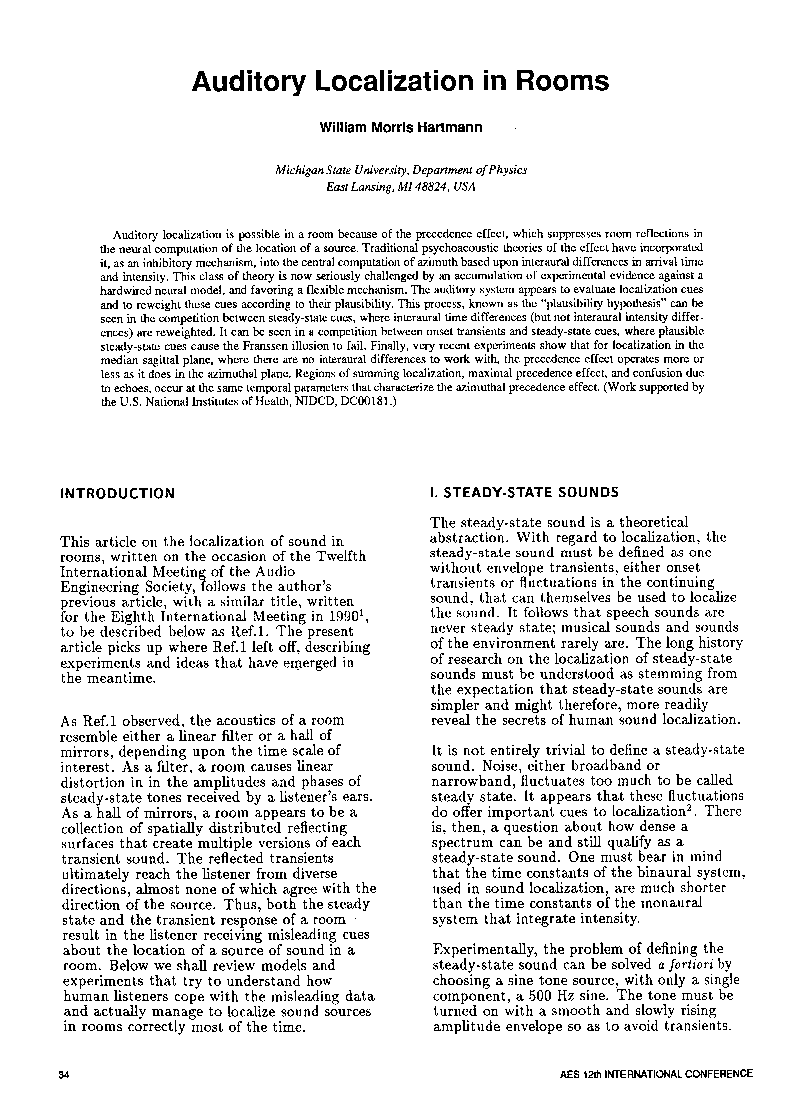Home / Publications / E-library page
You are currently logged in as an
Institutional Subscriber.
If you would like to logout,
please click on the button below.
Home / Publications / E-library page
Only AES members and Institutional Journal Subscribers can download
Auditory localization is possible in a room because of the precedence effect, which suppresses room reflections in the neural computation of the location of a source. Traditional psychoacoustic theories of the effect have incorporated it, as an inhibitory mechanism, into the central computation of azimuth based upon interaural differences in arrival time and intensity. This class of theory is now seriously challenged by an accumulation of experimental evidence against a hardwired neural model, and favoring a flexible mechanism. The auditory system appears to evaluate localization cues and to reweight these cues according to their plausibility. This process, known as the -plausibility hypothesis- can be seen in the competition between steady-state cues, where interaural time differences (but not interaural intensity differences) are reweighted. It can be seen in a competition between onset transients and steady-state cues, where plausible steady-state cues cause the Franssen illusion to fail. Finally, very recent experiments show that for localization in the median sagittal plane, where there are no interaural differences to work with, the precedence effect operates more or less as it does in the azimuthal plane. Regions of summing localization, maximal precedence effect, and confusion due to echoes, occur at the same temporal parameters that characterize the azimuthal precedence effect. (Work supported by the U.S. National Institutes of Health, NIDCD, DC00181.)
Author (s): Hartmann, William M.
Affiliation:
Michigan State University, Department of Physics, East Lansing, MI
(See document for exact affiliation information.)
Publication Date:
1993-06-06
Import into BibTeX
Session subject:
Perception of Reproduced Sound
Permalink: https://aes2.org/publications/elibrary-page/?id=6251
(644KB)
Click to purchase paper as a non-member or login as an AES member. If your company or school subscribes to the E-Library then switch to the institutional version. If you are not an AES member Join the AES. If you need to check your member status, login to the Member Portal.

Hartmann, William M.; 1993; Auditory Localization in Rooms [PDF]; Michigan State University, Department of Physics, East Lansing, MI; Paper 12-004; Available from: https://aes2.org/publications/elibrary-page/?id=6251
Hartmann, William M.; Auditory Localization in Rooms [PDF]; Michigan State University, Department of Physics, East Lansing, MI; Paper 12-004; 1993 Available: https://aes2.org/publications/elibrary-page/?id=6251